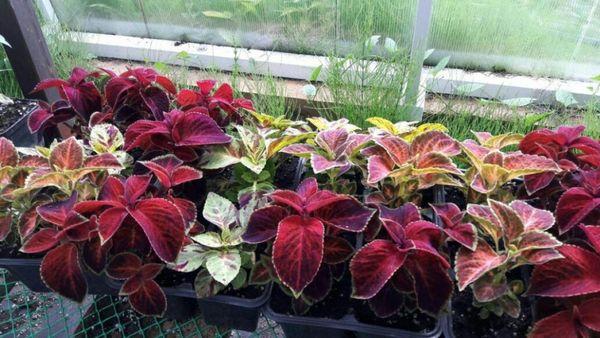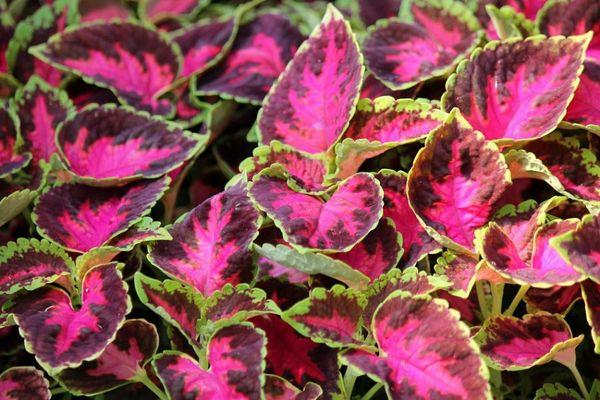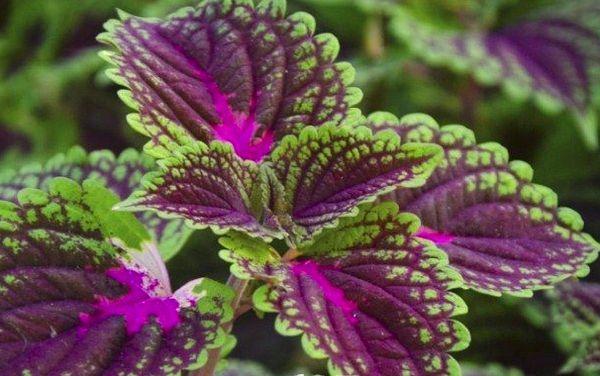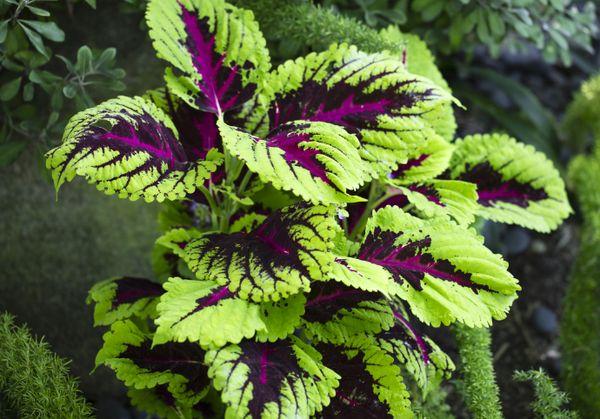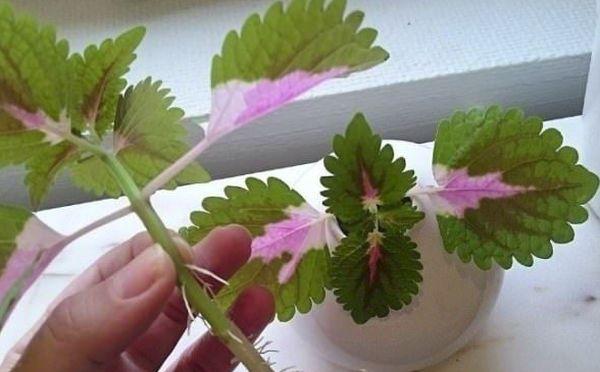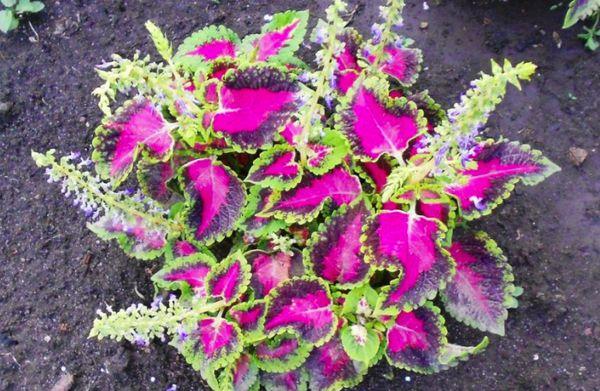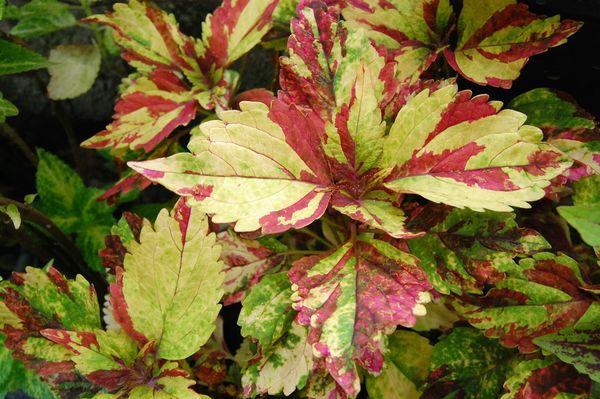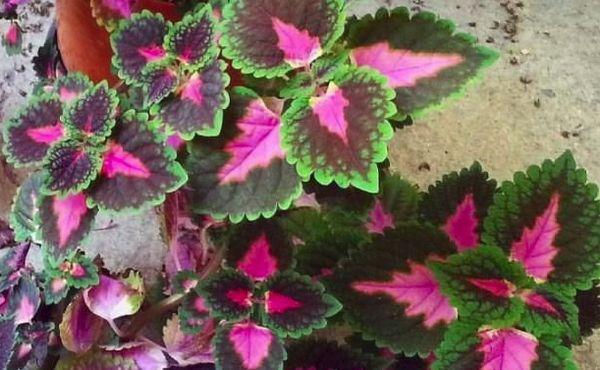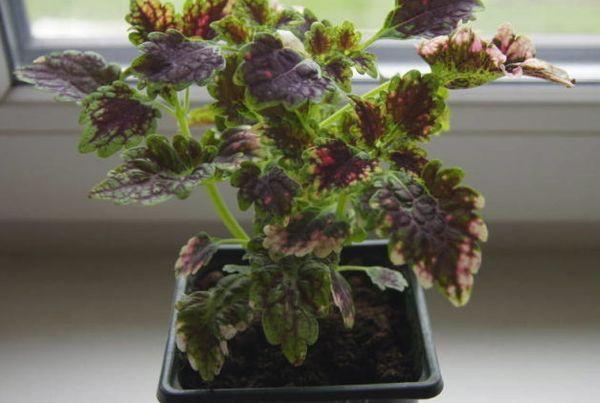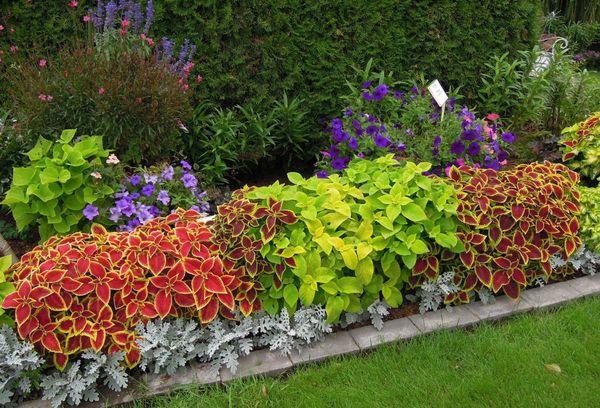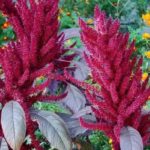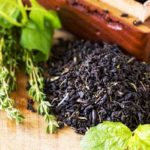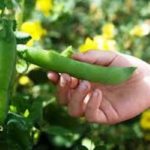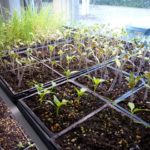Knowing the peculiarities of planting and caring for coleus in open ground, you can design a flower bed, terrace, and garden paths. Many people know this unpretentious plant as an indoor flower. Its original leaves serve as interior decoration. When grown in the garden, the decorative properties of coleus are preserved.
- General description of the plant
- Types and varieties of coleus
- Features of growing crops
- What time to plant
- Preparation of planting material
- How to plant correctly
- Tips for caring for coleus
- How to water correctly
- How to feed
- Plant pruning and shaping
- Protection from diseases and pests
- Reproduction methods
- Coleus in landscape design
General description of the plant
Flower growers lovingly call Coleus nettle. The shape of the leaf resembles nettle.In nature, the plant is found in the tropics. There coleus perennial, herbaceous subshrub. In our climate it is grown as a house flower.
A harsh winter is not suitable for a tropical dweller. It needs to be brought indoors for the winter. Coleus is valued and grown for the original, contrasting or bright monochrome color of its velvety leaf blades. The drawing consists of many shades.
It is unrealistic to list the entire color palette:
- red-violet and white border;
- green with a copper tint;
- purple and white trim;
- light green with a yellow border.
The leaves are located opposite on the shoots. They have an oblong, pointed-ovoid shape. The height of coleus bushes depends on the variety. Dwarf varieties do not exceed 20 cm. Large species reach 60 cm.
The flowering of the plant is inconspicuous. Flowers are white, blue or purple. They are collected in inflorescences. After pollination, seeds are formed. They can be used for reproduction.
Types and varieties of coleus
In the temperate climate of the middle zone, three types of nettle are grown - Renelta, Blume and a hybrid form. Varieties of the Blume variety are tall. The length of the ribbed tetrahedral stems is 80 cm. They are covered with large ovate-pointed leaves. The length of the leaf plates is about 15 cm.
The color palette of Coleus Blume is wide. The designs contain shades of black, pink, burgundy, purple, cream, and dark red. Popular varieties:
- Saber. Pink-cherry color, height 15 cm.
- Wizard Scarlet. The leaves are red with a golden edge.
- Wizard Pineapple. A mixture of shades of green and cherry.
Renelta varieties of Coleus are used to decorate office premises, trading floors, and residential premises. Reneltianus superbus and Rineltianus are popular among gardeners.Hybrid forms of coleus are herbaceous plants 20-60 cm high.
The leaves are beautiful, velvety, variegated. Their edges are curly, fringed, jagged, and wavy. The highly branching variety Rose Blush looks great in garden design. It has corrugated, soft pink leaves with a light green border.
Many varieties are named by the color of the pattern of the leaf blades:
- Red (red-green);
- Green (cream green);
- Golden Bedder (yellow).
Features of growing crops
Nettle loves sunlight. The decorative effect of a plant directly depends on the quality of lighting. In the shade the color fades. In open ground, the crop is grown as a summer plant. The seedlings are transplanted into the ground in early June.
What time to plant
Seeds for seedlings are sown in the spring at the beginning of March or at the end of April. During this period the days are short. Coleus seedlings do not have enough natural light. To extend daylight hours, phytolamps are used.
Preparation of planting material
Coleus seeds are very small. This creates certain difficulties. For better germination, they are treated with the following preparations:
- Chlorella suspension;
- microbiological fertilizer "Baikal EM 1".
Nettle shoots appear within a week. Seeds are sown in 2 pieces. in a glass. You can take the substrate from a store (universal flower soil) or prepare it yourself:
- garden soil - 1 hour;
- peat or coconut shavings - 1 hour;
- vermicompost - 1 hour;
- river sand - 1 tsp.
Drainage is poured into the bottom of the cup (technological pot). Take small expanded clay, crushed stone or walnut shells.
How to plant correctly
The seeds are small, so they are sown superficially and not buried. The soil is moistened and compacted a little. The seeds are spread out using a toothpick.Maintain a distance of 5 cm between them. You can lightly sprinkle the nettle seeds with river sand. The surface must be moistened with a fine sprayer. Before the emergence of seedlings, the glasses with seedlings are placed in a greenhouse. They are placed on a pallet and placed in a large transparent bag.
Pre-emergence care consists of simple operations:
- ventilation of the greenhouse;
- moistening the soil from a spray bottle;
- maintaining air temperature 23-25 °C.
At the age of 1.5 months, they are transplanted into pots of larger diameter. By this time, the seedlings have 2-3 true leaves. The picking is carried out carefully so as not to damage the thin roots.
Seedlings can be transplanted into the ground at the age of 2 months. By this time they should have formed 8-10 leaves. The height of seedlings ready for transplanting is 12-15 cm. They are prepared for outdoor conditions for a week.
For hardening, seedlings are taken out to the balcony for a week or kept in a greenhouse. Nettles are planted in openwork partial shade. In the scorching sun, the color loses its rich color. The decorative properties of coleus are reduced.
Tips for caring for coleus
All flower growers note that growing coleus in the garden is not a burdensome task. Caring for a flower is simple and takes little time. Nettle bushes are planted in 20 cm increments. Humus and a little sand are added to the soil.
How to water correctly
When it gets cold, watering is limited. In hot weather, bushes are irrigated more often. The sprinkling method is used. Sprinkle nettle over the leaf. The soil in the flowerbed should always be moist. Water is used warm (20-25 °C), settled.
How to feed
Fertilizing benefits the plant. The first time the fertilizer is applied 14 days after picking the seedlings.Water at the root with a solution of complex fertilizer for decorative deciduous crops.
During the summer, the flowerbed with coleus is fed with potassium fertilizers:
- water - 1 l;
- potassium nitrate - 0.5 g.
Coleus can be fed with fertilizers containing potassium every week. The culture responds well to the addition of organic liquid mixtures. Gardeners infuse grass and mullein. The concentrated “mash” is diluted with water in a ratio of 1:10. Fertilize nettles after scheduled watering.
Plant pruning and shaping
Growing shoots of adult coleus lose their decorative effect. Dried leaves worsen the appearance. If your seeds are not needed, then the inflorescences are cut off without waiting for pollination. For plants overwintering in an apartment, anti-aging pruning is carried out in the spring.
The stems are shortened by 5-7 cm. This stimulates the growth of side shoots. The bushes become fluffy again and are covered with young, brightly colored leaves. The cut tops are rooted in water or in a fertile substrate. Standing in water, they remain decorative for a long time. How to properly take cuttings and root is described below.
Protection from diseases and pests
The plant is not afraid of diseases. The culture is characterized by stable immunity. Coleus must be protected from pests. It may be attacked by spider mites. Young bushes often suffer from aphids and whiteflies.
Flowerbeds are treated against pests with insecticides:
- "Extra";
- "Apollo"
- "Confidor".
Whitefly larvae are fought with traditional methods. The leaves are washed with a concentrated solution of tar soap:
- water - 6 parts;
- grated soap - 1 part.
After watering, the soil in the flowerbed is sprinkled with ash. It repels pests and serves as fertilizing.
Reproduction methods
The operation of propagating coleus from cuttings is very simple. It does not require skills or special tools. In an adult plant, the crown 10-15 cm long is cut off with scissors or a sharp knife, this is the process of cutting. An apical cutting is obtained, ready for rooting.
Houseplants can be propagated by cuttings all year round. With the onset of autumn, garden coleus are transplanted into pots and brought into a heated greenhouse, loggia or apartment for the winter. To decorate the garden plot, coleus is propagated vegetatively in March.
Experienced gardeners prefer to root the tops in water. A commercial root growth stimulator (Kornevin, Chlorella suspension) is added to it. Some gardeners accelerate rooting with raw yeast (100g/l). The cuttings are placed in yeast water for a day.
Roots appear quickly. Within a week, the lower part of the stem is covered with strong white roots. For further rooting, cuttings are planted in pots filled with a mixture of garden soil, sand and humus. In June, coleus can be planted in a flower bed.
Coleus in landscape design
The French were the first to appreciate the beauty of coleus. They actively used the plant to create garden compositions. The flower was appreciated by Russian landscape design masters. The culture is used in combination with lilies, cannas, roses, and other flowers.
Dwarf varieties of nettles are planted in flower beds. Bushes of Fiberb and Nana Spike do not exceed 30 cm. Their brightly colored leaves fill the space between the flowers with companions. The main goal of the landscape designer is to choose the right coleus companions.
Burgundy tall roses look good against the background of light green foliage with a golden border.Varieties of nettles with bright leaves combine harmoniously in compositions with monochromatic ornamental crops:
- cineraria;
- sage;
- gray fescue.
Multi-colored ampelous and low-growing varieties are planted in beautiful flowerpots. They decorate secluded corners of the garden, terraces, and patios. Coleus looks harmonious in the landscape of any garden. Its beauty is that it is decorative throughout the summer. Using different varieties of coleus, gardeners create colorful compositions with patterns reminiscent of an oriental carpet.

